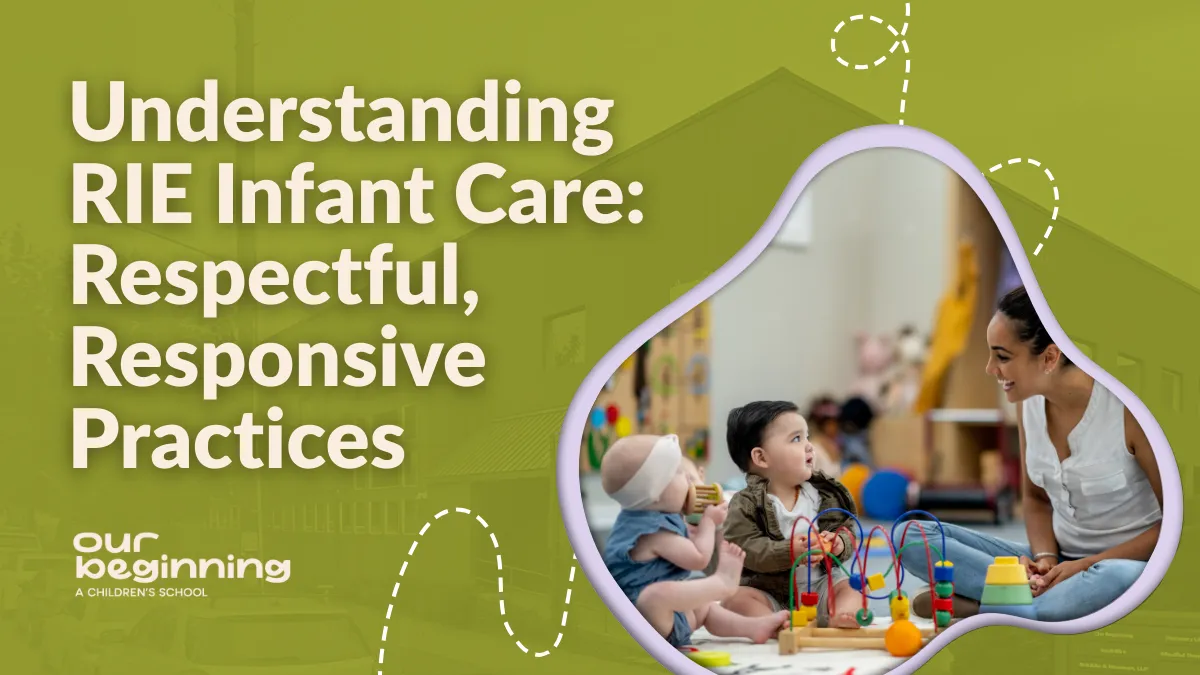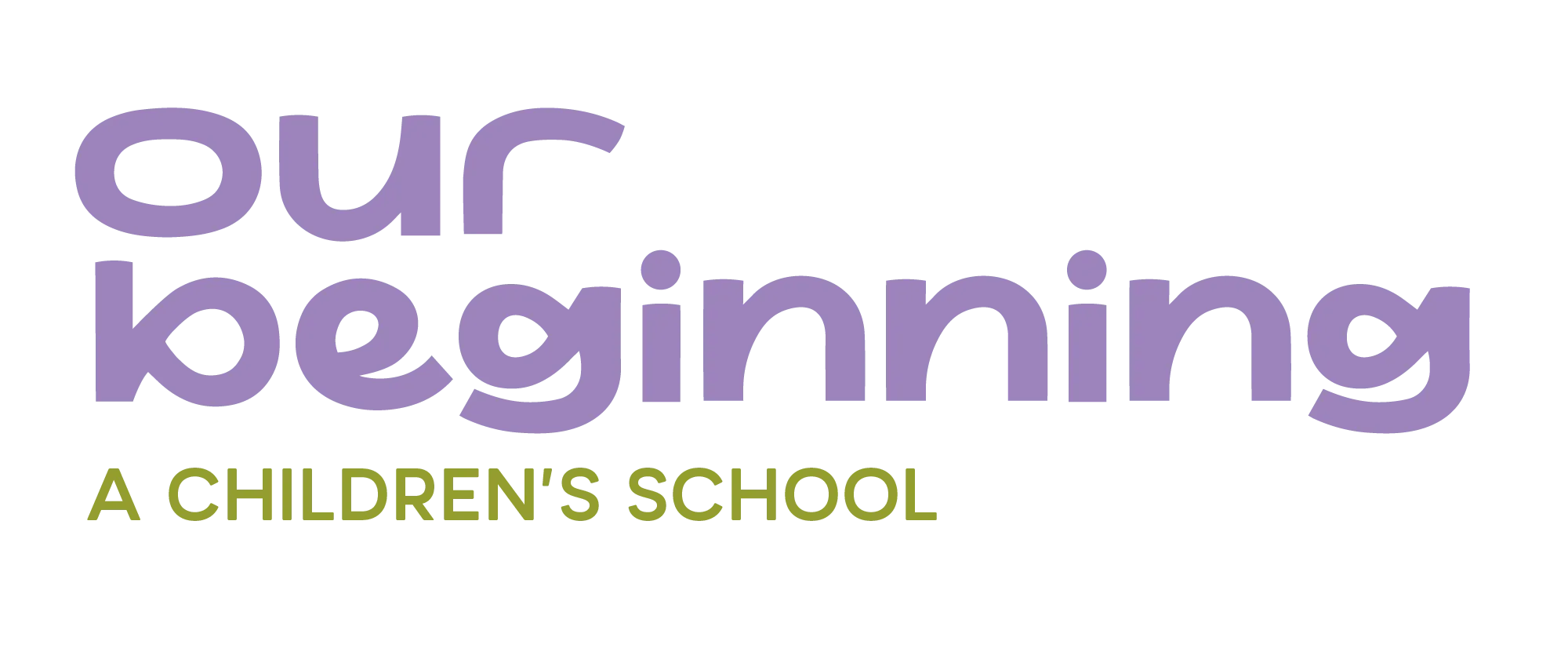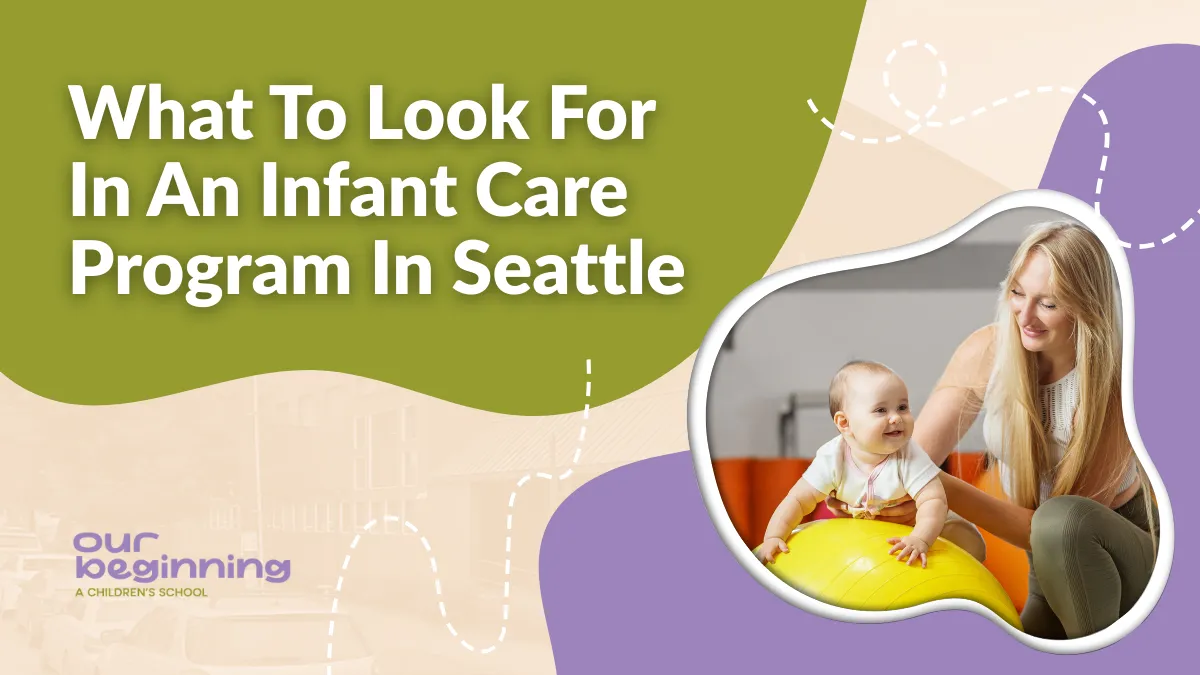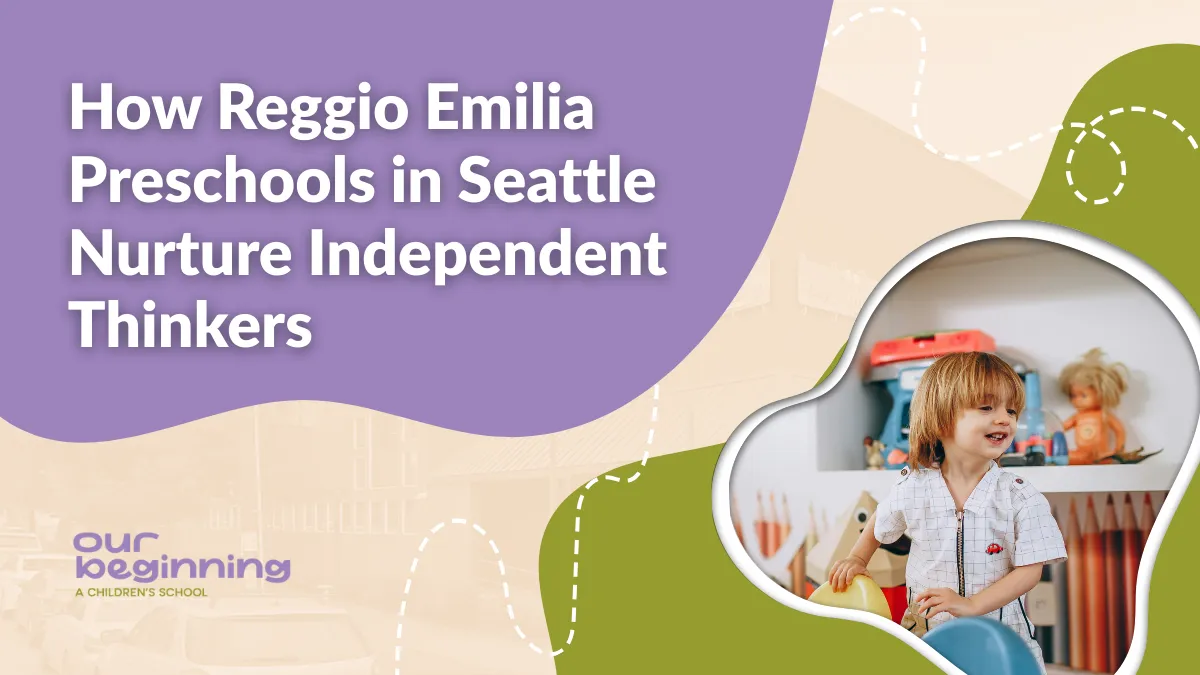An infant care program in Seattle should prioritize responsive caregiving, safety, and strong family partnerships. Look for Washington-licensed providers with low infant-to-caregiver ratios, CPR/First Aid trained staff, and evidence-based practices that honor each child’s rhythms and needs. Safe sleep policies, secure check-in procedures, and calm, hygienic environments indicate consistent standards.
Developmentally appropriate experiences, like sensory exploration, language-rich interactions, tummy time, and outdoor time, support healthy growth. Clear daily communication, documented learning goals, and periodic developmental check-ins help families stay informed. Thoughtful nutrition, inclusive practices, and continuity of care from a consistent primary caregiver further signal a program designed for infant well-being.
Understanding RIE Infant Care: Respectful, Responsive Practices

RIE infant care centers on the belief that even the youngest child is a competent, aware person who deserves respect. Caregivers slow the pace, observe closely, and respond to cues with calm, predictable actions. The result is secure attachment, self-initiated exploration, and steady developmental progress.
Core Principles of Respect
RIE practice treats every routine as relationship-building. Caregivers invite participation during diapering, feeding, and dressing by telling the infant what will happen and waiting for a response. Gentle, consistent touch and eye contact create trust. Predictable routines reduce stress and support regulation, while individualized schedules honor sleep and hunger patterns.
Caregiving Routines as Curriculum
Care moments are the primary learning opportunities in the first year. During a diaper change, the caregiver narrates each step, pauses for the infant’s cooperation, and follows with unhurried transitions back to play. Feeding respects family preferences and the infant’s pace, with safe handling of breastmilk, formula, and first foods. Safe sleep practices and regular observation guide adjustments to each child’s plan.
Environment and Freedom of Movement
A RIE-inspired space is simple, safe, and uncluttered. Infants spend wake time on firm floor surfaces for free movement, not in restrictive equipment. Low shelves hold a small selection of open-ended materials such as soft balls, grasping rings, and fabric squares. This setting supports motor milestones, sustained attention, and independent problem-solving.
Attentive Language and Observation
Caregivers provide a steady, descriptive language stream that names actions, feelings, and objects. They observe before intervening, allowing the infant to attempt a solution and signaling availability when needed. Documentation notes patterns in sleep, feeding, play, and engagement, which inform family communication and next steps.
What To Look For
- Calm, unhurried caregiving with narrated steps and invitations to participate
- Primary caregiver assignments that support continuity and secure attachment
- Floor-based play with minimal containers and ample time for free movement
- Simple materials that encourage grasping, mouthing, exploring, and cause-and-effect
- Individualized routines, safe sleep, and responsive feeding aligned with family preferences
- Transparent communication, daily notes, and developmentally grounded observations
Programs that follow these practices provide infants with consistent relationships, meaningful choices, and environments that respect their natural drive to learn.
Why Low-Ratio Infant Daycare Matters: Safety, Bonding, and Development

Low-ratio infant daycare creates the conditions for attentive, individualized care. With fewer infants per caregiver, staff can observe closely, respond promptly, and maintain consistent routines that protect health and support growth.
Safety Through Attentive Supervision
Smaller groups allow caregivers to monitor breathing, positioning, and comfort during sleep and wake times. Frequent handwashing, sanitizing, and toy rotation are easier to implement when staff are not overextended. Truly low ratios, often in the range of 1:3 to 1:4, depending on age and local rules, support active supervision and timely responses to cues.
Bonding and Primary Caregiving
Secure attachment forms when infants experience reliable, calm interactions with a familiar adult. Low ratios make primary caregiving feasible, so one consistent caregiver learns an infant’s rhythms, signals, and preferences. Predictable relationships reduce stress, support regulation, and provide the emotional base for confident exploration.
Developmental Gains From Individual Attention
Infants thrive when adults have time to talk, sing, read, and narrate daily routines. In a low-ratio setting, caregivers can extend floor time, offer purposeful materials, and scaffold emerging skills at the child’s pace. Responsive, one-to-one interactions benefit language development, early motor milestones, and social engagement.
Family Communication and Continuity
Low ratios also strengthen family partnerships. Caregivers can provide detailed daily notes, share observations, and collaborate on feeding, sleep, and comfort plans. Small groups make handoffs more personal during transitions and reduce routine disruptions.
What To Look For in a Low-Ratio Program
- Posted ratios and group sizes that remain consistent throughout the day
- Primary caregiver assignments with clear coverage during breaks
- Calm rooms with ample floor space and minimal container use
- Frequent, descriptive caregiver language during care routines
- Individualized feeding, sleep, and soothing plans aligned with family preferences
- Transparent daily communication with specific observations and next steps
For families evaluating an infant care program in Seattle, a low-ratio infant daycare signals a commitment to safety, meaningful relationships, and steady developmental progress from the first weeks.
Choosing an Organic Infant Daycare in Seattle: Nutrition and Wellness Standards
Organic infant daycare in Seattle should pair high-quality ingredients with rigorous food safety, individualized feeding plans, and transparent communication. Families benefit when a program treats nutrition as part of whole-child wellness and aligns daily practices with clear standards.
Defining Organic in Daily Practice
An organic approach prioritizes whole foods, minimal processing, and careful sourcing. Programs should share how ingredients are selected, which items are organic, and how menus are planned for infants at different stages. Written policies describing produce washing, grain and protein choices, and limits on added sugars provide clarity.
Kitchen Operations and Food Safety
Safe preparation protects infants during a critical period of development. Look for trained staff, documented temperature controls, and clean, separate areas for bottle prep and food handling. Clear labeling, dated storage, and sanitization schedules help prevent errors. Regular audits and posted procedures indicate consistent adherence.
Feeding Plans and Developmental Readiness
Individualized feeding supports growth and comfort. Programs should honor breastmilk and formula preferences, follow safe handling and warming protocols, and introduce solids when developmentally ready. Purées and soft textures can progress thoughtfully, with iron-rich options and appropriate textures to support oral motor development. Caregivers should track intake and note appetite patterns.
Allergens and Special Diets
Allergy-aware practices reduce risk. Expect written plans for allergen introduction, cross-contact prevention, and emergency response. Ingredient lists, separate utensils, and color-coded storage reduce confusion. Families should receive timely updates about menu changes and substitutions.
Wellness Practices Beyond the Menu
Nutrition is most effective within a healthy routine. Consistent handwashing, toy sanitation, and clean floor spaces support immunity. Safe sleep procedures, outdoor time, and calm, predictable schedules promote regulation and digestion. Air quality practices, hydration, and gentle transitions further support wellness.
What To Look For on a Tour
- Weekly menus with clear ingredient sourcing and infant adaptations
- Documented food safety routines, including labeling and temperature logs
- Individual feeding plans that reflect family preferences and pediatric guidance
- Allergen management with visible safeguards and staff training
- Daily communication that reports intake, reactions, and next steps
An organic infant daycare that integrates careful sourcing, strong safety systems, and responsive routines provides a dependable foundation for healthy growth during the first year.
Infant-Centered Curriculum: Sensory, Language, and Motor Foundations
An infant-centered curriculum places daily care at the heart of learning. Thoughtful routines, responsive interactions, and purposeful environments create steady opportunities for sensory discovery, early communication, and motor development.
Sensory Exploration With Purpose
Infants learn through safe, repeated experiences that engage touch, sight, sound, smell, and movement. Materials should be simple and open-ended, such as soft cloths, grasping rings, textured balls, and natural objects vetted for safety. Gentle contrasts in light and sound support attention without overstimulation. Caregivers model calm exploration, introduce cause-and-effect, and rotate materials based on observation.
Language Foundations in Every Moment
Language grows through consistent, responsive exchanges. Caregivers narrate actions, name feelings and objects, and pause for the infant’s response. Books, rhymes, songs, and finger plays occur throughout the day, not only at group times. Serve-and-return interactions, infant-directed speech, and visual supports foster comprehension. When applicable, bilingual exposure respects family language goals through meaningful, consistent use rather than isolated vocabulary drills.
Motor Development Through Free Movement
Strong motor foundations emerge on the floor with unrestricted movement. Daily tummy time, side-lying, and time on a firm surface invite reaching, rolling, pivoting, and crawling. Low, stable furnishings encourage pulling to stand and cruising. Programs minimize restrictive equipment and allow infants to progress at their own pace, with caregivers offering secure proximity and encouragement rather than guided positioning.
Observation, Progress, and Partnership
Ongoing observation informs individualized plans. Staff document emerging skills, preferred materials, and regulation patterns, then adjust experiences and routines accordingly. Families receive clear updates on sleep, feeding, play, and milestones, with collaborative goal setting that honors pediatric guidance and family preferences.
Environment and Schedule That Support Learning
Calm rooms, natural light, and organized materials focus attention. Predictable sequences for care, play, and rest help infants anticipate what comes next and conserve energy for exploration. Outdoor time, stroller walks, and safe nature contact extend sensory and motor learning while supporting regulation.
What To Look For
- Uncluttered floor spaces and minimal container use
- Consistent narration, songs, and shared book time
- Daily tummy time with gradual increases in duration
- Observation-based material rotation and documentation
- Clear family communication with individualized goals
- Calm pacing that respects each child’s readiness and cues
Conclusion
A high-quality infant program places relationships, safety, and health at the center of daily practice. When a setting reflects respectful RIE principles, maintains low ratios, and integrates an infant-centered curriculum, children experience calm routines, steady developmental progress, and secure attachment. Clear licensing and safety procedures, primary caregiving for continuity, and a well-prepared environment create predictable conditions for learning. Thoughtful nutrition, grounded in careful sourcing and rigorous food safety, supports growth alongside responsive feeding, safe sleep, and individualized schedules. Transparent family communication and documentation ensure that goals remain aligned and adjustments are timely.
Start your next step with Our Beginning: https://ourbeginning.com/admissions/ or call (206) 547-1433.



